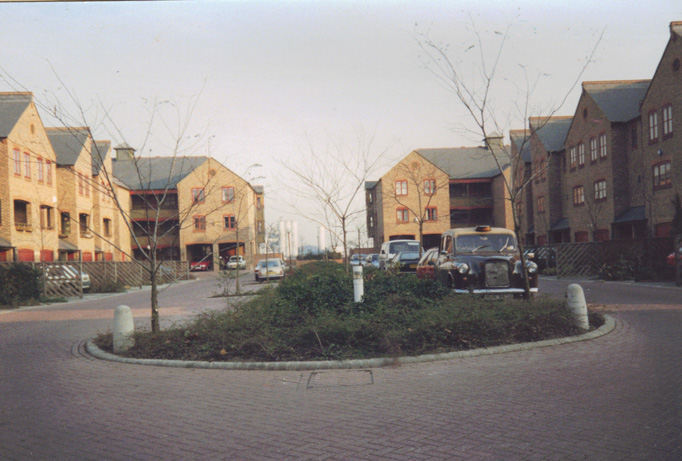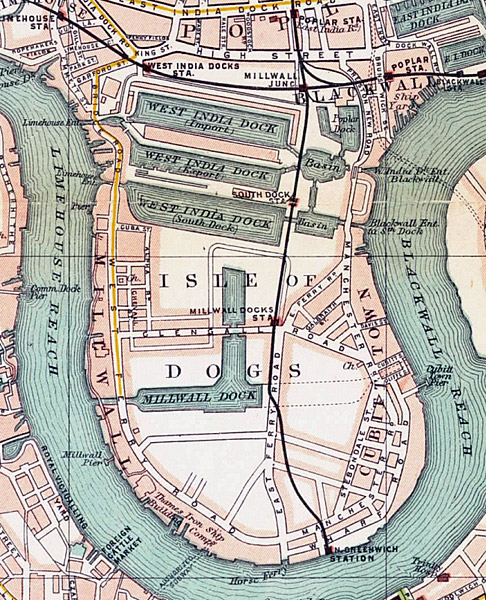PLYMOUTH WHARF RESIDENTS ASSOCIATION




|
Our history... |
|
Plymouth Wharf Pyrimont Wharf The below piece was taken from The Island History Trust website: www.islandhistory.org.uk Until 1800 the Isle of Dogs, also known by its original name of Stebunheath or Stepney Marsh, was pastureland. It was protected from the high tides of the River Thames by a great bank of earth, wood and stones, erected in the far distant past. Windmills for grinding corn were built on the western side of this bank between 1680 and 1720, giving the area the name "Millwall". It was a rather isolated place, inhabited only by millers, ferrymen and cowherds. At the end of the 18th century, the pressure of shipping and cargoes in the old port of London was such that new port facilities had to be provided. By Act of Parliament, two enclosed wet docks were authorised, one near the Tower as St Katherines's, the other across the northern end of the Isle of Dogs. These were the West India Docks, opened in 1802 to handle imports of rum and sugar. Soon afterwards the western foreshore of the Island was developed with shipyards, barge builders, mast makers and iron works. The name Millwall became associated with the most advanced engineering of the day, leading to the construction of Brunel's famous and ill-fated Great Eastern in the 1850s. On the eastern side William Cubitt, master builder and twice Lord Mayor of London, had developed Cubitt Town. By the 1860s the population had risen from around 200 in 1800 to over 14,000. Shipbuilding declined, but engineering, chemical works and food processing flourished. The Millwall Docks were opened in the centre of the Island in the 1860s to handle imports of grain and timber. By the end of the 19th century the population had risen to 21,000 and the entire foreshore was ringed with factories and workshops. Some of the famous products associated with the Isle of Dogs in its industrial heydey were chain cables made by Brown and Lennox, suppliers to the Admiralty, the well known McDougall's Self Raising Flour, Duckhams Oil, Maconochie's Pan-Yan Pickles, Morton's Jams, Cutler's Gas Holders, Westwoods Bridges, and Hawkins and Tipson's "Hercules" Rope. In the twentieth century a settled working-class community lived on the Island in the streets of terraced houses crowded in amongst docks and factories. It had its own schools, pubs, churches, clubs and societies, traditions and customs. The Blitz of the Second World War destroyed many homes and scattered the population, but the community survived. New local authority housing replaced the old streets and in the 1960s there was plenty of work in the docks and factories. However, this was not to last and the 1970s saw a general economic downturn. Factories closed or moved away in order to modernise. Finally the docks closed too. There was a period when the Island environment, once so busy, was dominated by silence, still waters, rusting cranes and corrugated iron fencing round derelict riverside sites. Then the London Docklands Development Corporation was created, with a brief to attract investment capital into the area. The Isle of Dogs became an enterprise zone. Millions of square feet of new offices were built. The landscape was transformed as shining towers of glass and steel rose from the mud, casting long shadows over nearby council estates. The Docklands Light Railway opened in 1987, giving Islanders rapid transport into the City for the first time. By the year 2000 the Island had changed as radically as it had changed 200 years ago with the building of the first docks. There are new ways of working and a new population, even a London Underground connection in the fast, up-to-the-minute Jubilee Line Extension. Interest in its history remains as keen as ever, amongst both the traditional community and new residents. |